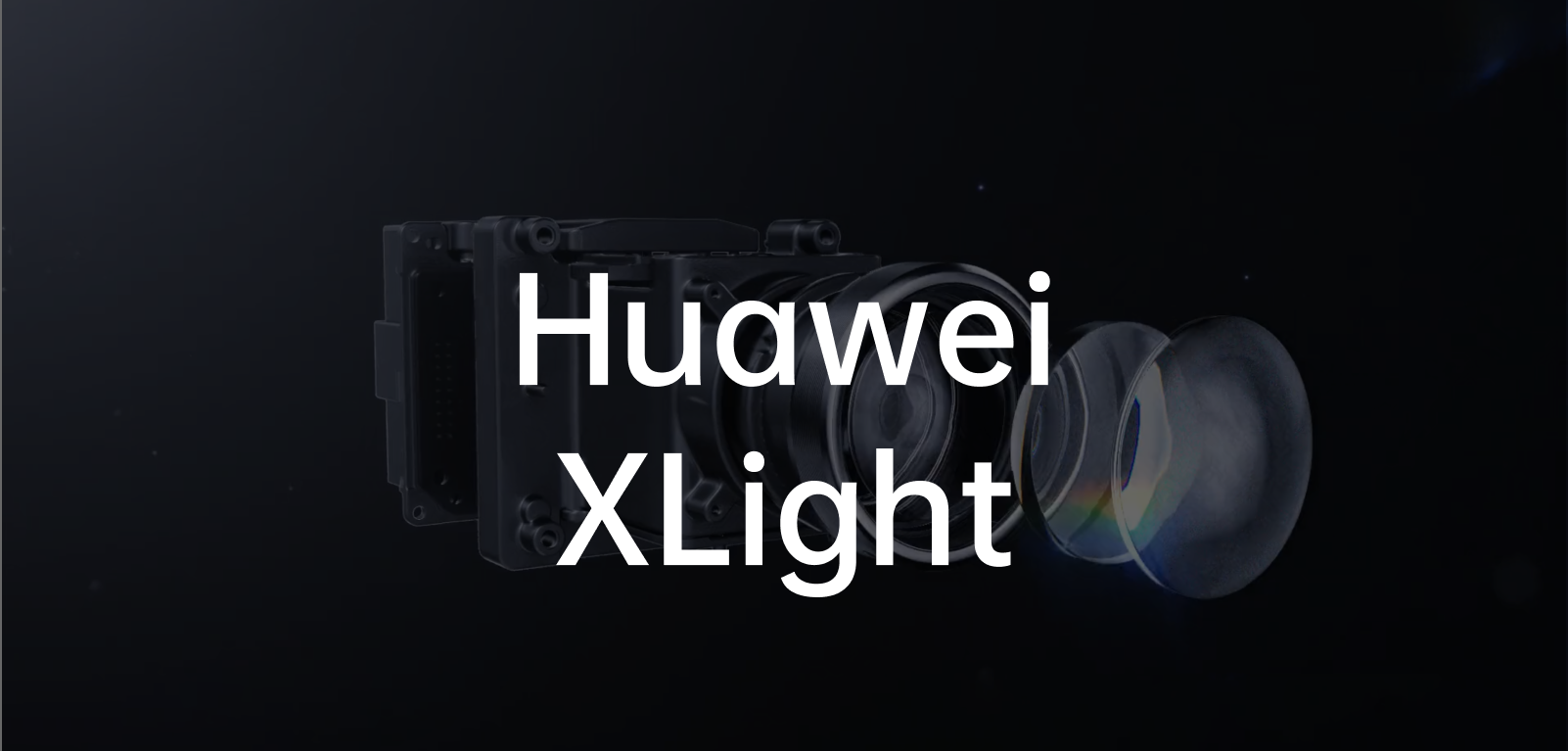
As Huawei continues to explore the intelligent automobile industry, it is gradually becoming involved in more specialized sub-fields.
On November 10th, at the 17th Automotive Lighting Industry Development and Technology Forum and the 8th Shanghai International Automotive Lighting Exhibition (ALE), Huawei released its latest exploration achievement in the field of vehicle-mounted optics – the automotive intelligent lighting solution Huawei XLight.
Another Exploration in the Field of Optics

In fact, more than 20 years ago, Huawei had already delved into the field of optics and has since accumulated a large number of optics patents, including space optics, laser light sources, optics algorithms, optics perception, and so on. Huawei XLight, which is the current intelligent vehicle lighting product, is the result of Huawei’s continued research in the field of optics and another exploration in this field.
Huang Zhiyong, President of the Optical Application Department of Huawei, stated: “In the future, Huawei XLight, the intelligent automobile lighting solution, will be able to provide mainframe factories with intelligent lighting functions such as safety illumination, intelligent driving assistance, and entertainment interaction, all with the ultimate experience.”
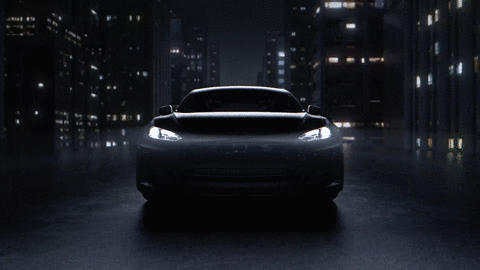
The first hardware product of this solution is Huawei’s self-developed intelligent automobile lighting module, as well as the LSM (drive board) and HCM (control board) hardware that are matched with the lighting in this solution. With the aid of the matching algorithm, this set of solutions can achieve a large number of intelligent functions, such as watching movies or casting a zebra crossing for pedestrians.
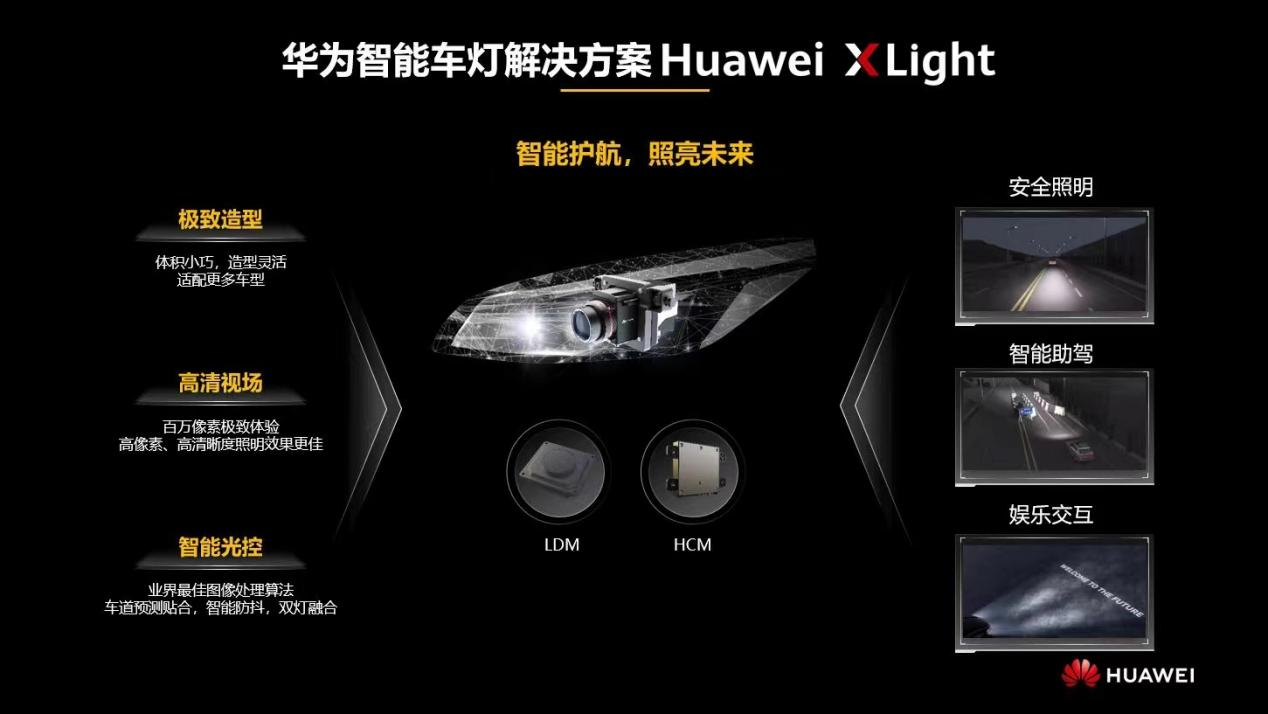
So, why does Huawei choose to collaborate with lighting factories as a Tier 2 instead of manufacturing the entire lamp?In Huang Zhiyong’s view, the light is the most changing element in the entire car design, and it is the least standardized. One of Huawei’s ideas is to help the lamp factory make good lights by providing modules and algorithms, while the appearance of the whole lamp can be designed and made by the automaker freely. This is the idea of Huawei’s light production and also the boundary.
Higher Specifications, Lower Costs
What characteristics should a set of lights that can meet the design needs of automakers as much as possible have?
If more whole lamp appearances need to be adapted, a small volume is necessary, which can minimize the compromise of design in engineering structures. Therefore, in the initial design stage, the small volume of the Huawei XLight scheme’s lamp module is already one of the development directions.
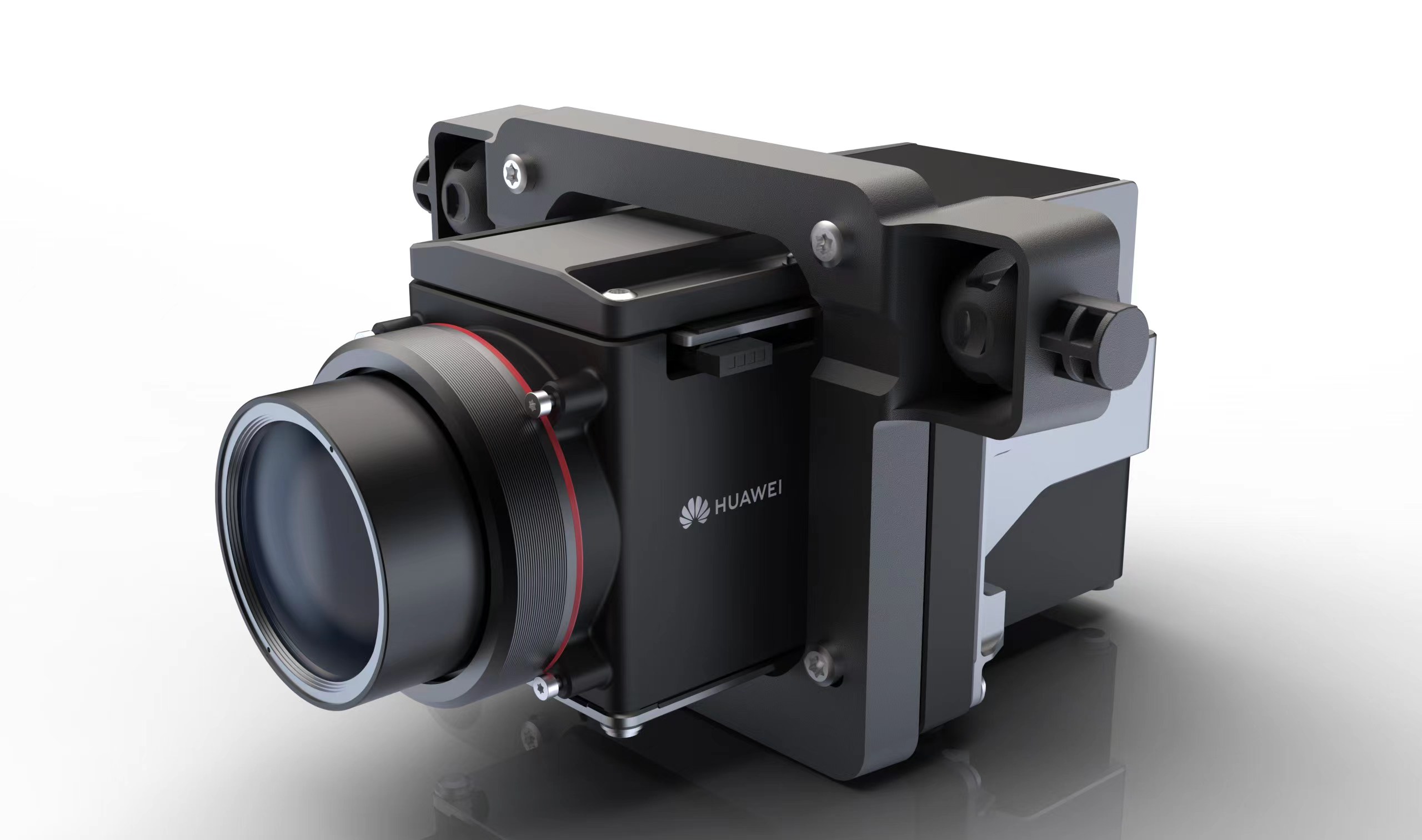
In the past, the volume of car headlights was huge. For example, in the era of halogen headlights, the effects of high directivity and brightness needed to rely on a huge reflector, and even though the xenon headlights used lenses later, the module volume was still very large because of the principle of exciting xenon gas to emit light.
Therefore, the biggest highlight of the Huawei XLight scheme in the current product form is the ultra-small size of the lamp group. Huawei reduces the overall optical complexity through a simple, compact, and concise light path design and achieves optical path reuse by folding the light path, reducing the optical volume of the module by 8%.
According to the introduction, after the ultra-high-brightness light source is reflected once, it illuminates the digital microscope array and is then refracted by a group of imaging lenses, projecting the real image into the distance.
On top of this, the entire lamp group achieves high brightness while having an extremely small module size.
The other advantage of the simplified structure is low cost. A smaller number of internal parts can greatly reduce the cost of a single module. This is also necessary for the development of the smart lamp industry. Huang even expressed the hope that Huawei can equip every car with high-pixel and high-brightness intelligent headlights in a short period of time.
Pixel, Laser, Intelligence
Huang Zhiyong mentioned in the media sharing session that Huawei’s view of future car lights is in three directions: pixelization, laserization, and intelligence. These three directions also correspond to the three indicators of car lights, 2.6 million pixels, ultra-high brightness, and intelligent algorithms.In short, everything is needed.
High Pixel
The current released lighting module achieves a resolution of 2.6 million pixels by using two car lights, which merge two 1.3 million pixels images. This pixel level is basically equivalent to the resolution of 2K display hardware. Therefore, it can achieve highly customized content projection similar to a projector. Basic up and down locking welcome light effects only require designing images to achieve a unique lighting effect for each user.
Laser Light Source
In the first generation product, Huawei has not fully utilized the laser light source, but will use it in future designs. The current ultra-bright light source will be replaced with a brighter laser light source. After the light source is laserized, the opening of the lamp group will become smaller, and the volume of the entire module will be only a fraction of the current state, which can almost blend with the daytime running lights. This is good news for the currently popular split headlight design.
Entertainment applications with unlimited possibilities
Before the intelligent in-vehicle lighting solution of Huawei was officially applied to mass-produced cars, the research and development department had some imaginative and pioneering entertainment applications and features.
The advantage of having up to 2.6 million pixels is that high-resolution black-and-white videos can be directly projected on the ground or walls. Therefore, theoretically, the playability of car lights will become very rich when the vehicle is stationary.
For example, Christmas-themed content can be projected to create a festive atmosphere.
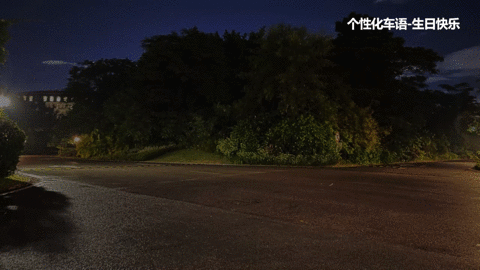
Fitness interactive games can also be projected to increase outdoor camping fun.

These are all ways of using the car lights as a projector. The potential for its functions is enormous. Of course, it can only project white light for now. If it can achieve color projection in the future, then all the projection applications can be used on headlights. For example, projecting a large screen to watch an outdoor movie, the contrast presented by the brightness of car lights compared to projectors should be invincible.### Expanded Functional Applications
If it’s only used as a projector, then it can be said that such car lights don’t have too many technological highlights. Therefore, the application of the Huawei XLight solution is more about information interaction with pedestrians, vehicles, and other traffic participants while driving, which can to some extent enhance the safety of each traffic participant.
Turn Signal Guidance


A “light carpet” is projected in front of the vehicle, which is actually as wide as the vehicle, to assist in narrow road passing and external notification.
Pedestrian Guidance
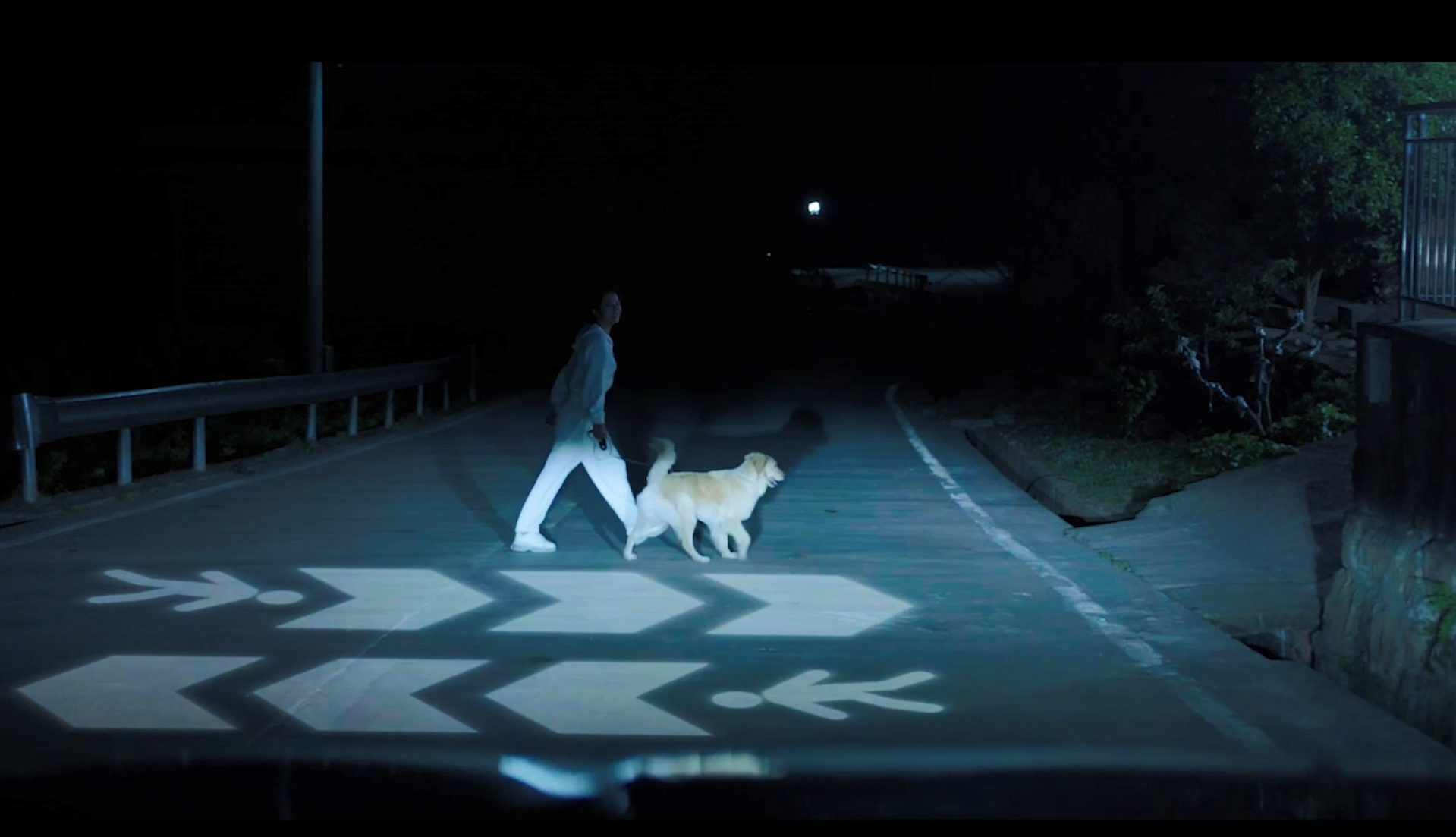
In the case of pedestrians crossing the road, a “crosswalk” is projected on the ground to indicate giving way.
It Still Relies on the Algorithms
As the Huawei XLight solution comes with the LSM and HCM control and driver boards, it can directly run Huawei’s self-developed algorithms to improve the effect during use. Moreover, at the perceptual level, the entire car’s auxiliary driving perception hardware information can be directly called without the need for an additional set of perception hardware. This simplifies the composition of Huawei’s smart car light module.
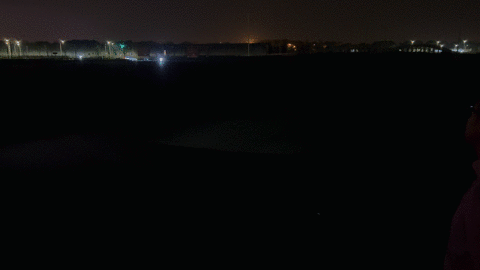
In the actual mass production state of installation, there will inevitably be slight angle deviations between the two modules when they are installed on the left and right sides of the vehicle. Moreover, such deviations will be amplified in the case of long-distance projection. The smart car light module in the Huawei XLight solution doesn’t correct such deviations through mechanical structures, but controls the pixels to fit the two lights and automatically detects the projection deviations of the two modules to calculate the complete fusion state.
On the other hand, a common issue during a vehicle’s lifecycle is the slight displacement and loosening of various vehicle parts caused by prolonged use, which can result in a mismatch of the left and right headlights. Therefore, automatic correction algorithms can maintain the desired effect more effectively than factory calibration.
As a road user, being directly exposed to vehicle headlights can oftentimes cause temporary blindness and discomfort for both drivers and pedestrians. There are strict regulations regarding the use of high beam lights, which should generally only be used in extreme conditions to avoid causing this issue for other drivers.
During driving, intelligent headlights require a basic functionality of automatically avoiding other vehicles, as they possess high luminosity. However, avoiding pedestrians is also critical, as they are often the central elements of traffic in many situations.
Huawei’s self-developed Adaptive Driving Beam (ADB) algorithm assists driving by sensing pedestrian posture with ADAS hardware and accurately controlling the headlights to avoid illuminating areas above the pedestrians’ shoulders, thereby illuminating pedestrians without causing them to be dazzled.
Moreover, the integration of the above algorithm with a laser light source mentioned earlier complements the functionality of both systems. As long as glare is avoided to prevent discomfort to other road users, higher luminosity light sources can be used to achieve better lighting effects.
Ecological Endorsement
Huawei’s Flyperv R7 is the first production car to feature AR-HUD, which can project a wealth of information onto the HUD. If the integration of intelligent headlights and information interaction is realized – for example, displaying navigation information on the HUD without being seen by others while projecting lane-level road guidance on the road – streamlining two forms of information flow can be realized. This integration may be the scariest feature of Huawei’s car hardware ecology.
Final Thoughts
The application of pixelated headlights is still relatively scattered at this stage. For example, in the aforementioned pedestrian interaction feature, if there is no industry-wide standard to define the graphics used, pedestrians may find it difficult to understand the information they receive, rendering the interaction meaningless.
Because this kind of information exchange is not common knowledge for ordinary people like traffic lights and zebra crossings, Huawei currently hopes to work together with the industry and relevant departments to promote graphical standardization, so that intelligent light interaction can truly land in the future.
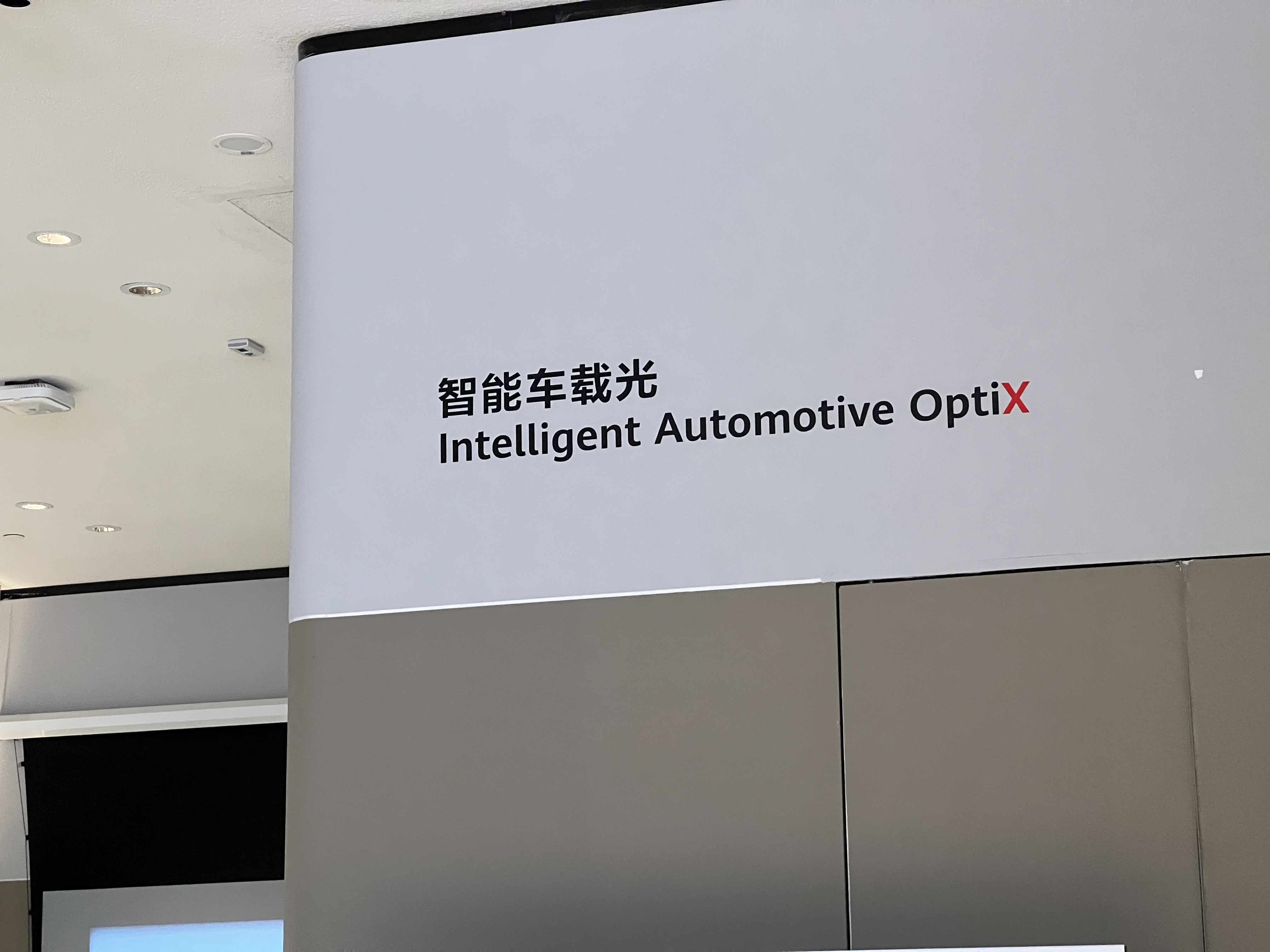
On the other hand, if a large number of vehicles in the future are equipped with pixel intelligent lights, a large amount of graphic projection may cause certain light and information pollution to public traffic roads. This situation also puts forward the demand for working conditions and standards in the intelligent car lighting industry, which are problems that need to be promoted and solved by the entire industry in the future.
The drafting and implementation of relevant standards and regulations needs to be continuously promoted and improved, from bottom-level technological innovation to integrated production and manufacturing of the entire lamp, and to the final user experience. Currently, the comprehensive promotion of high-pixel intelligent headlights still requires the continuous joint development and iteration of the entire automotive intelligent lighting industry.
From one-piece headlights to the currently popular split headlights, the purpose of the split is to make the shape and lines of the front headlights more structured. Therefore, when small enough front headlights can be applied, the two may be combined into one again in the future, directly integrated into a smaller and more design-friendly whole. This may bring more possibilities for future car styling design.
As for new technologies and applications, there is still a lot of development space left for automobile companies and the industry. Although there are not many practical things that have been achieved now, new technologies are for the future. Why use limited vision to look at unlimited future?
This article is a translation by ChatGPT of a Chinese report from 42HOW. If you have any questions about it, please email bd@42how.com.
